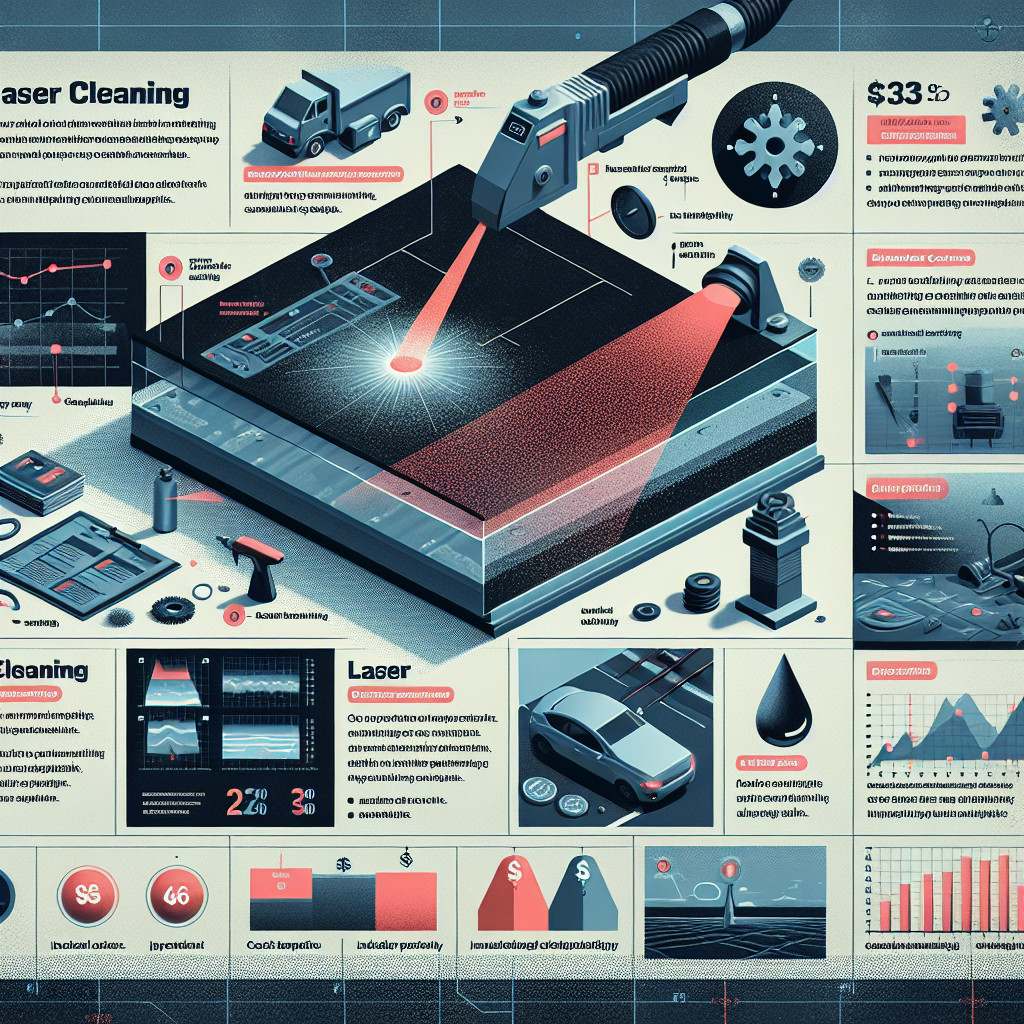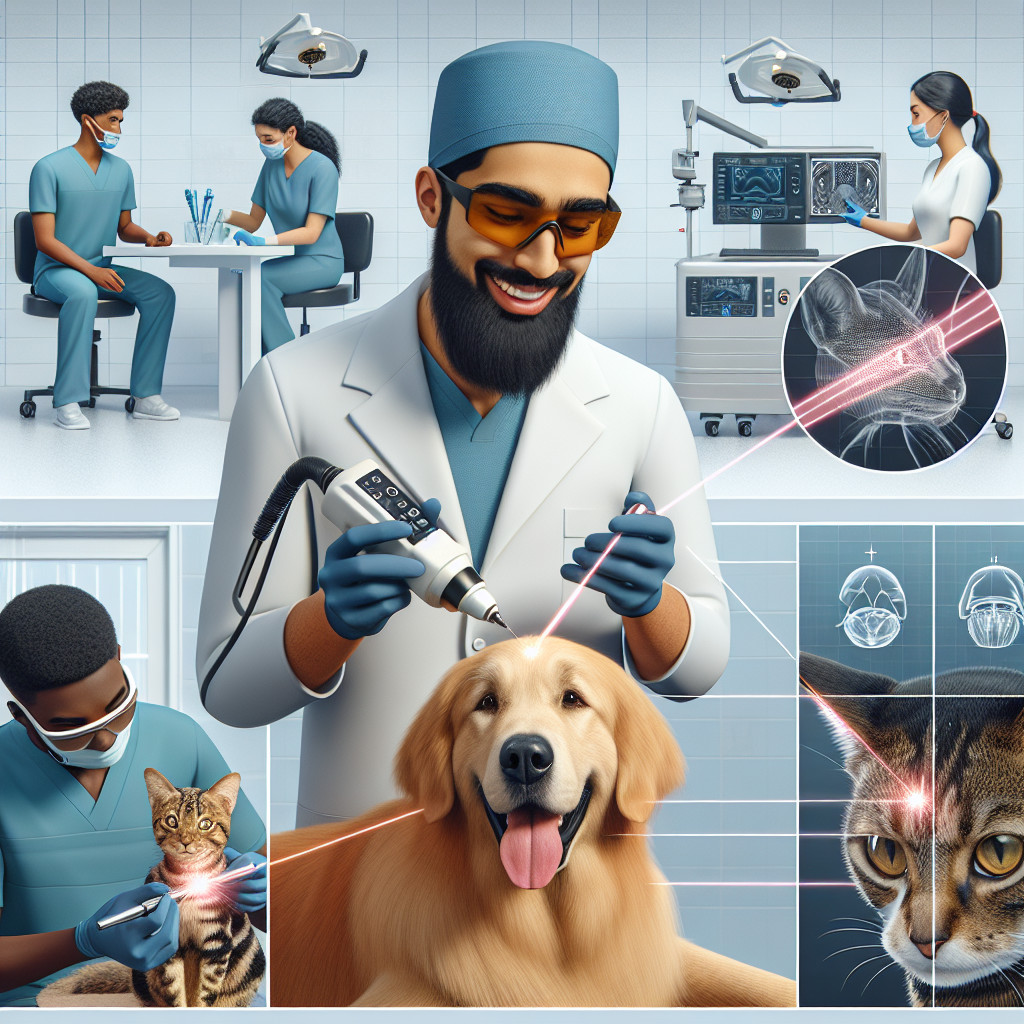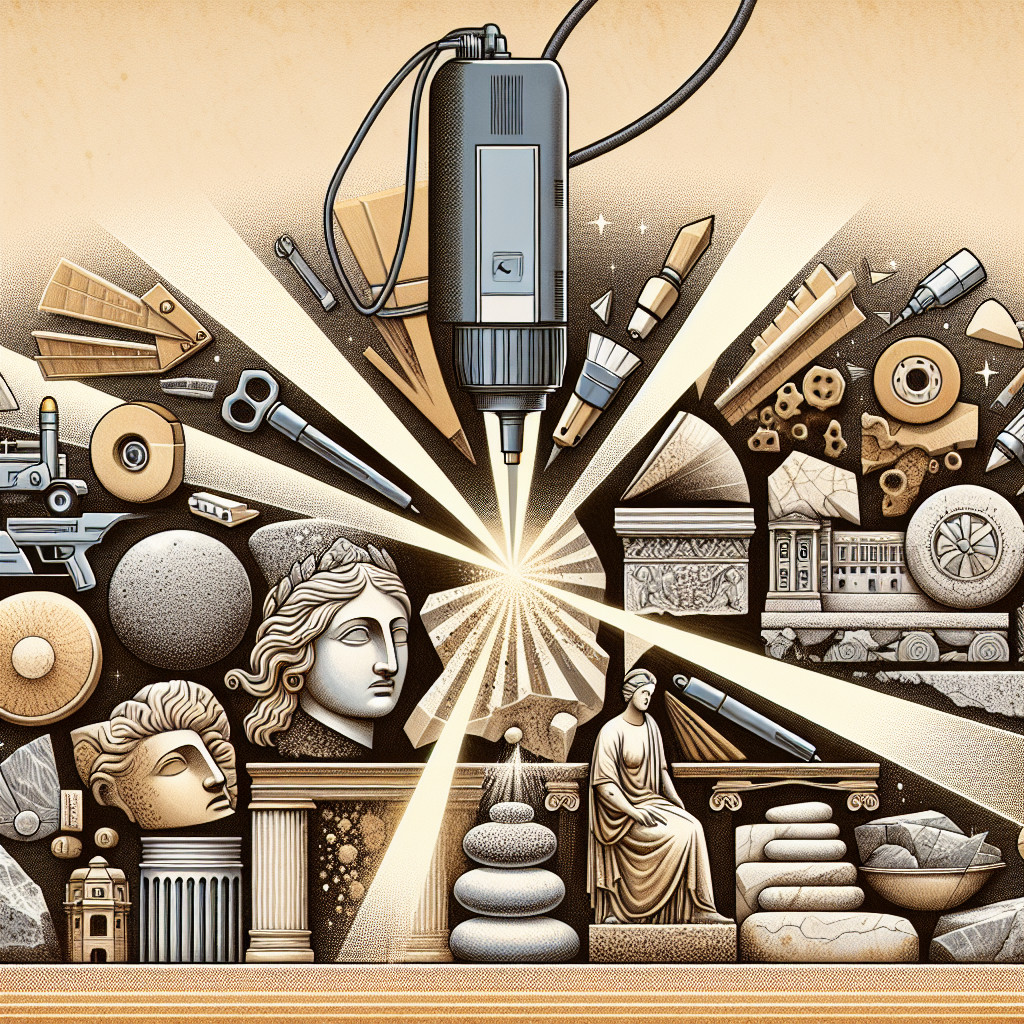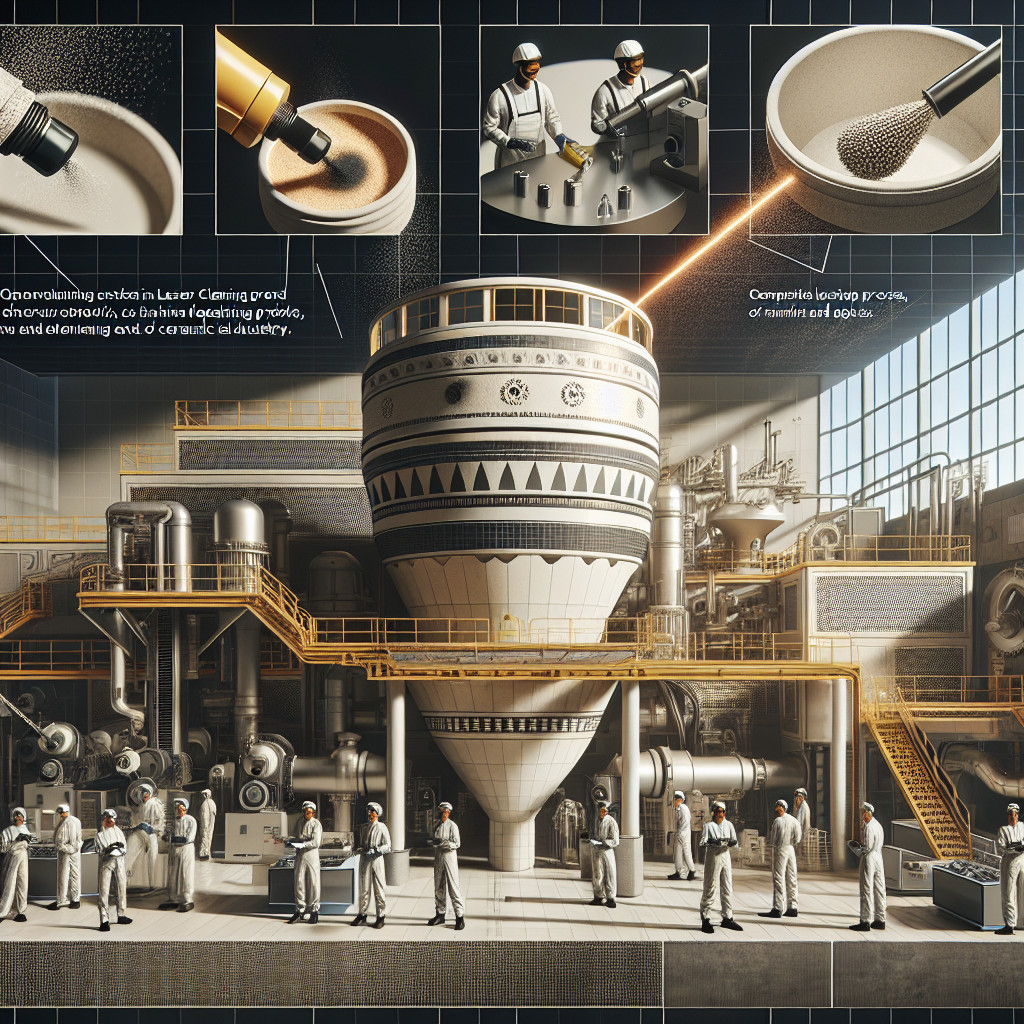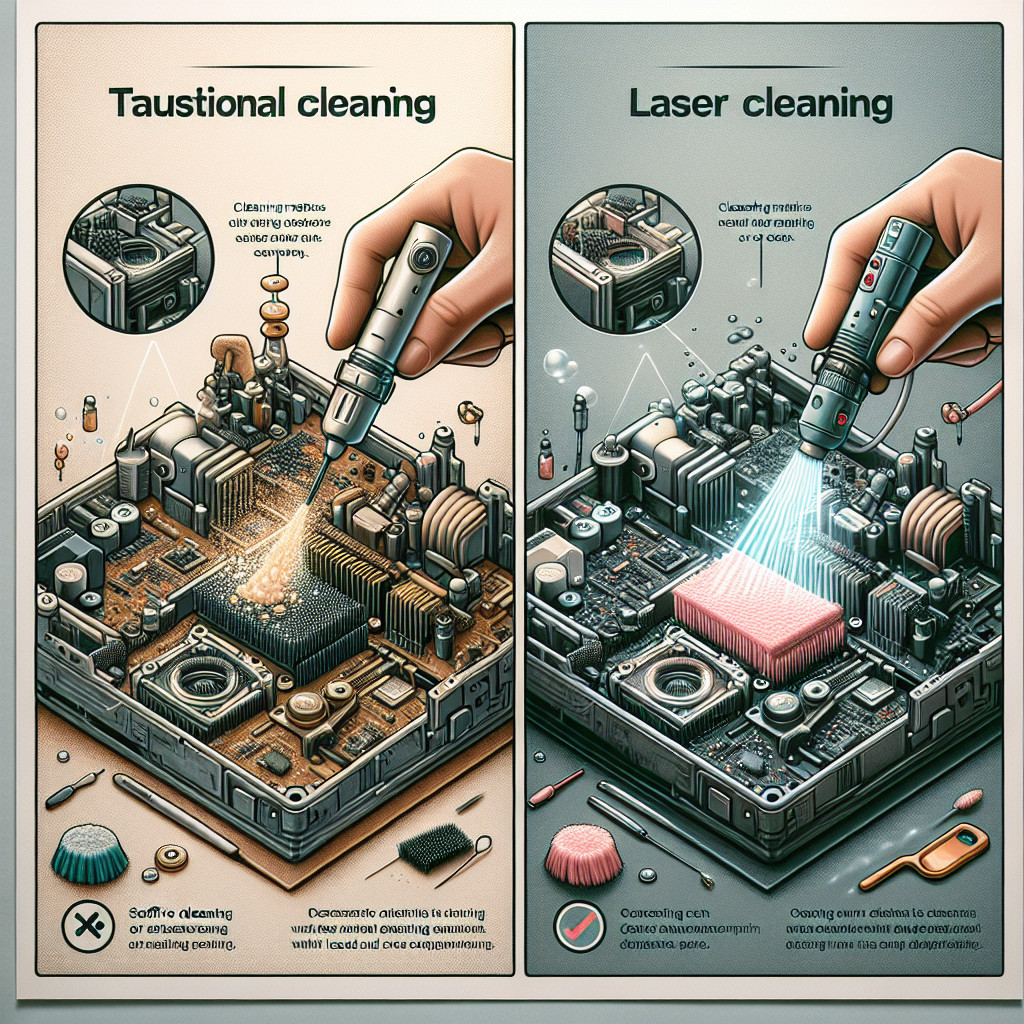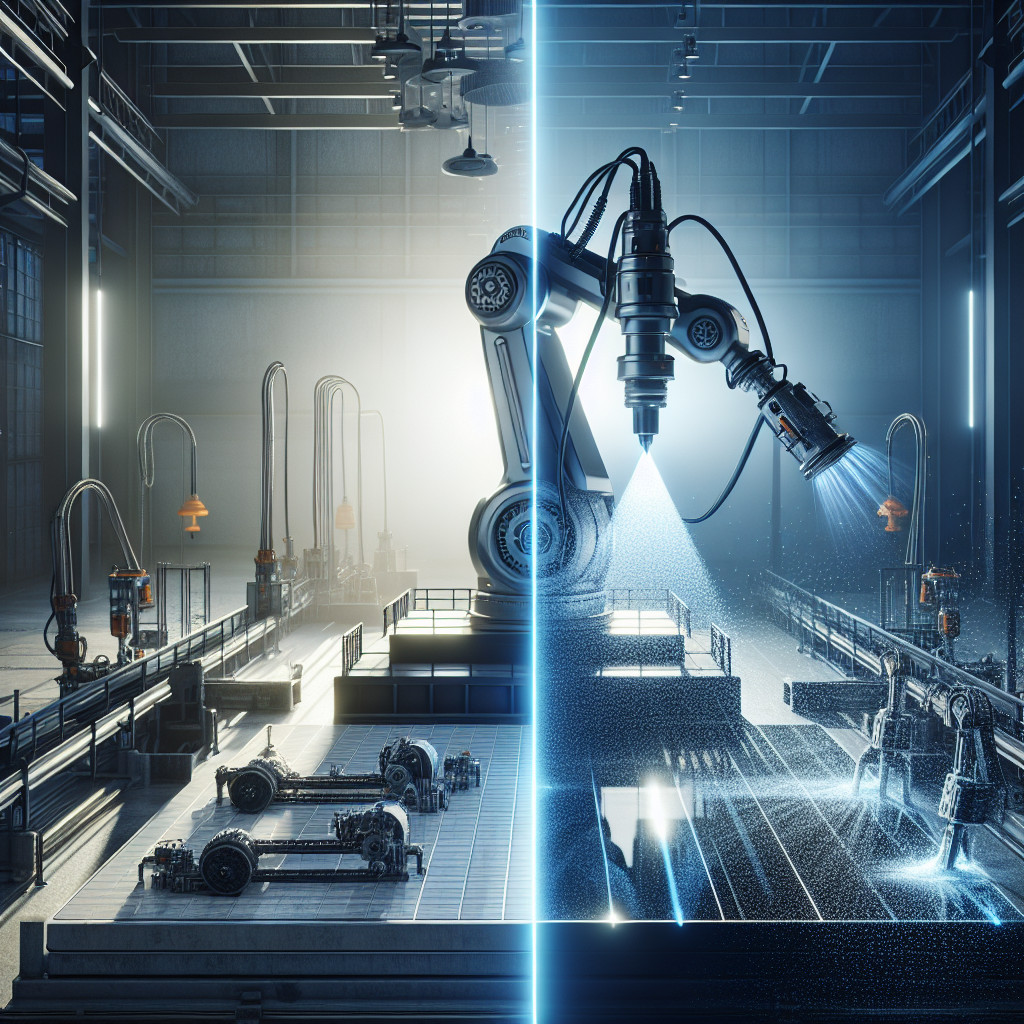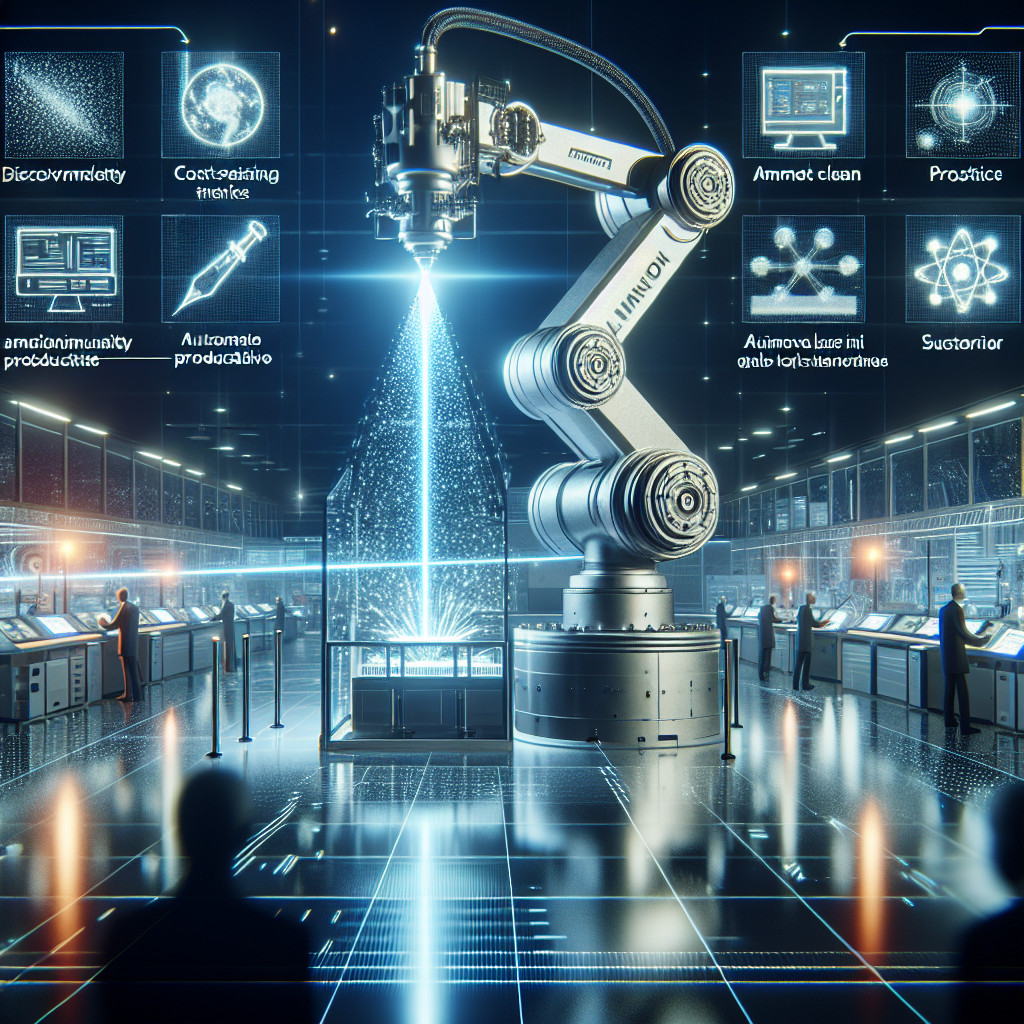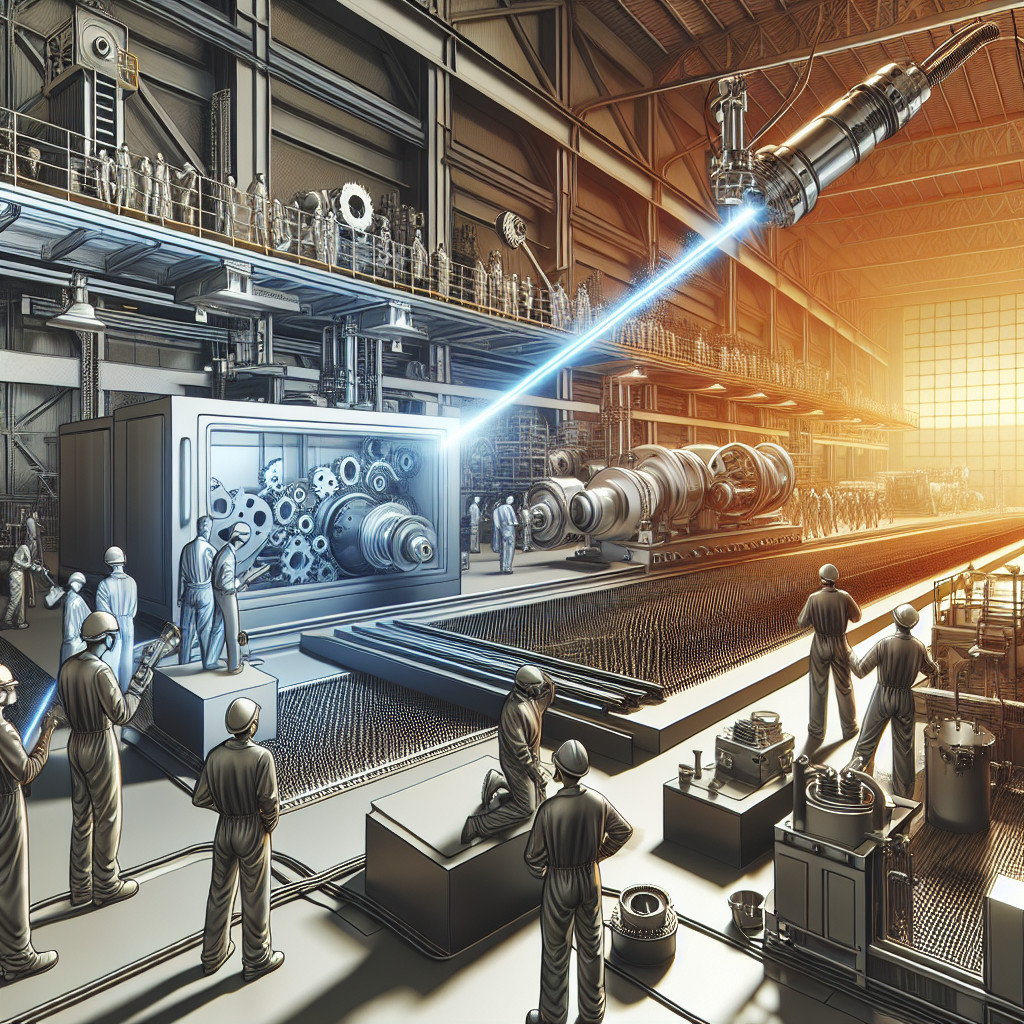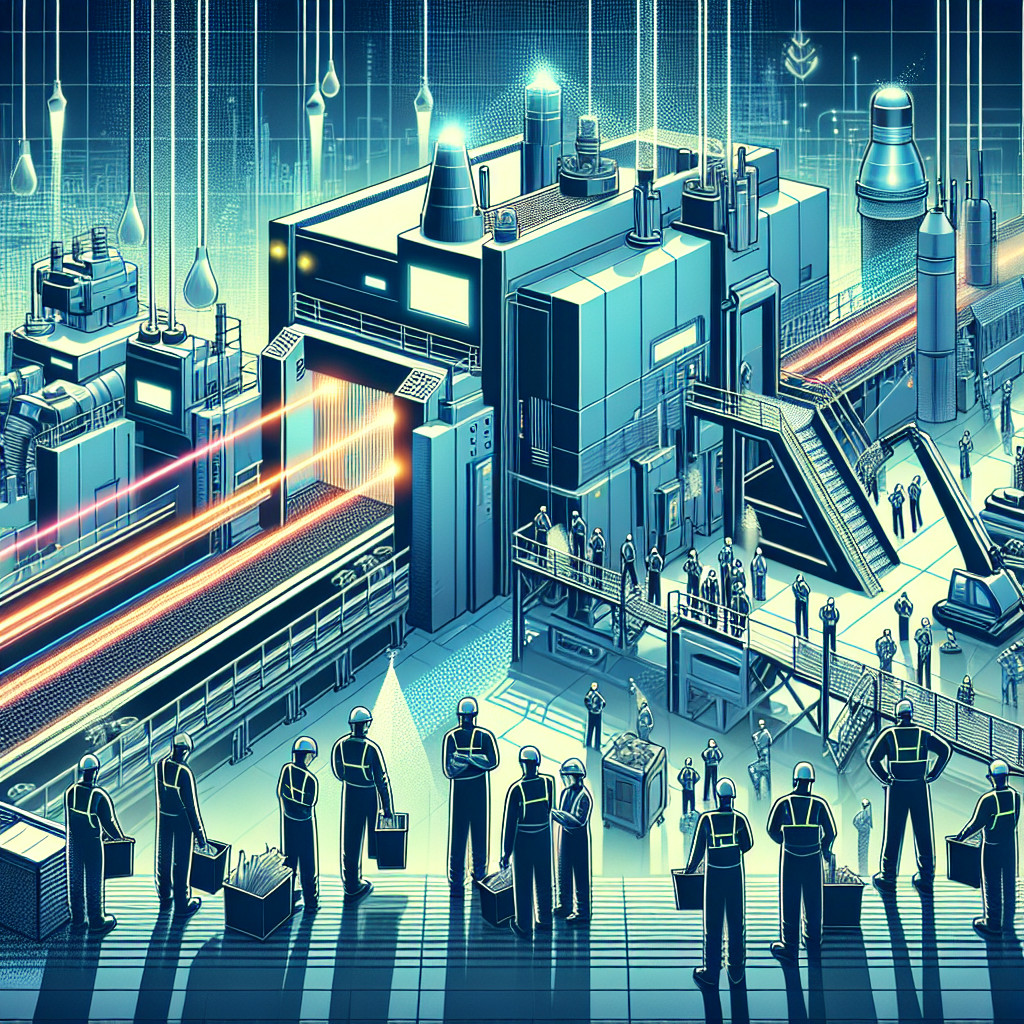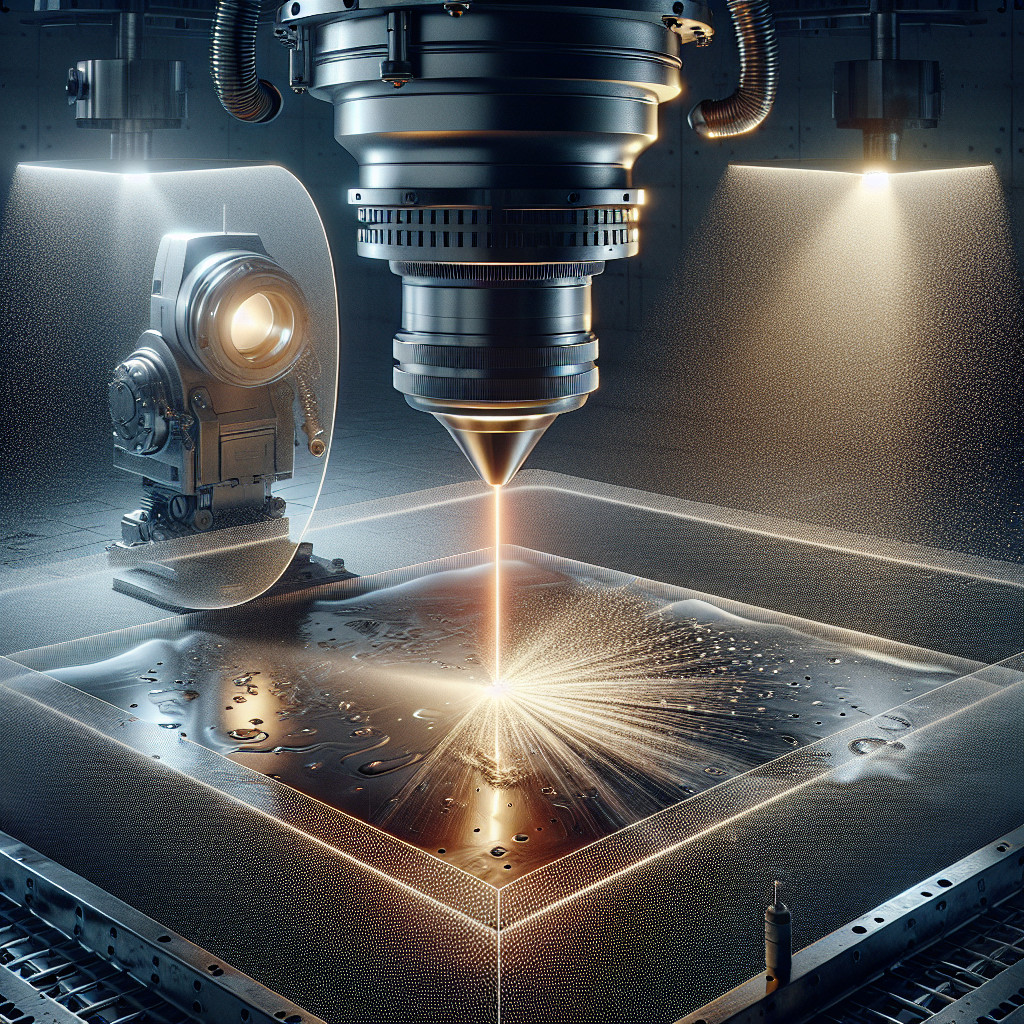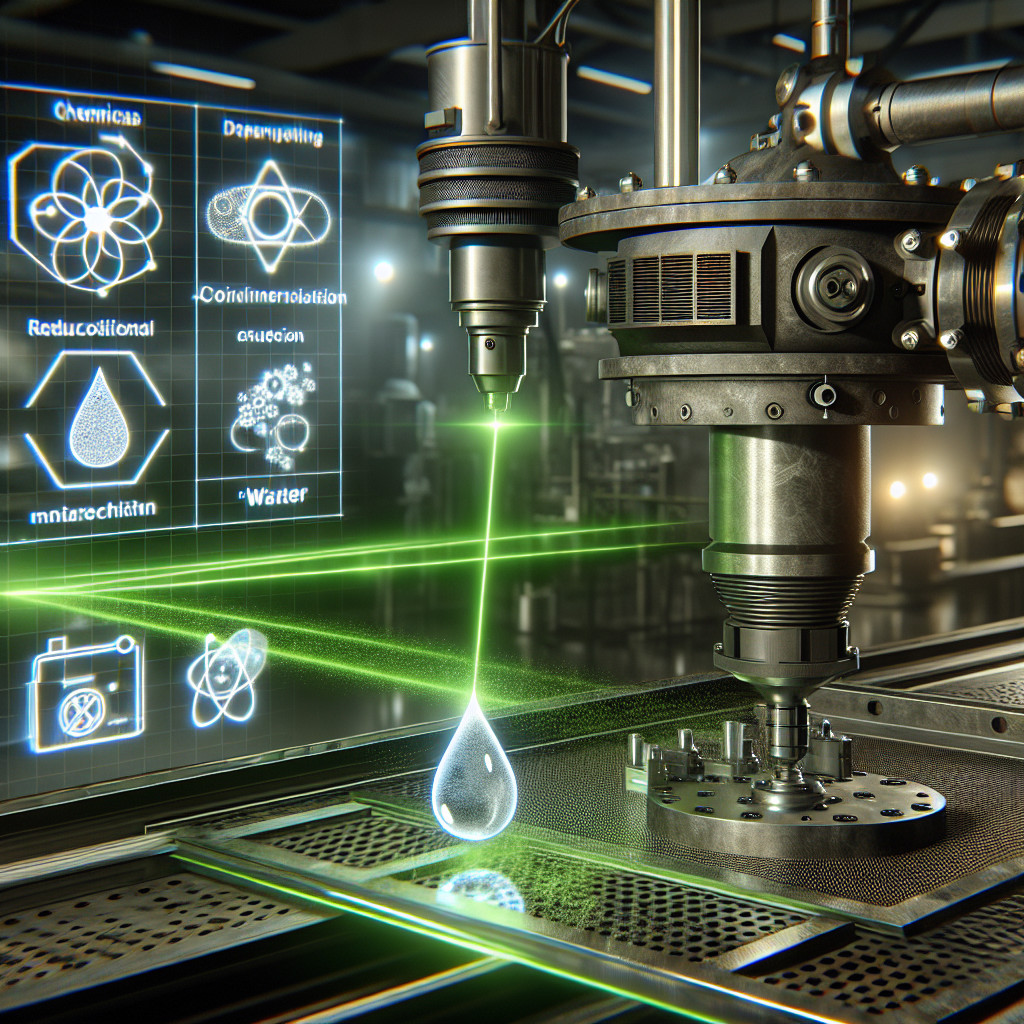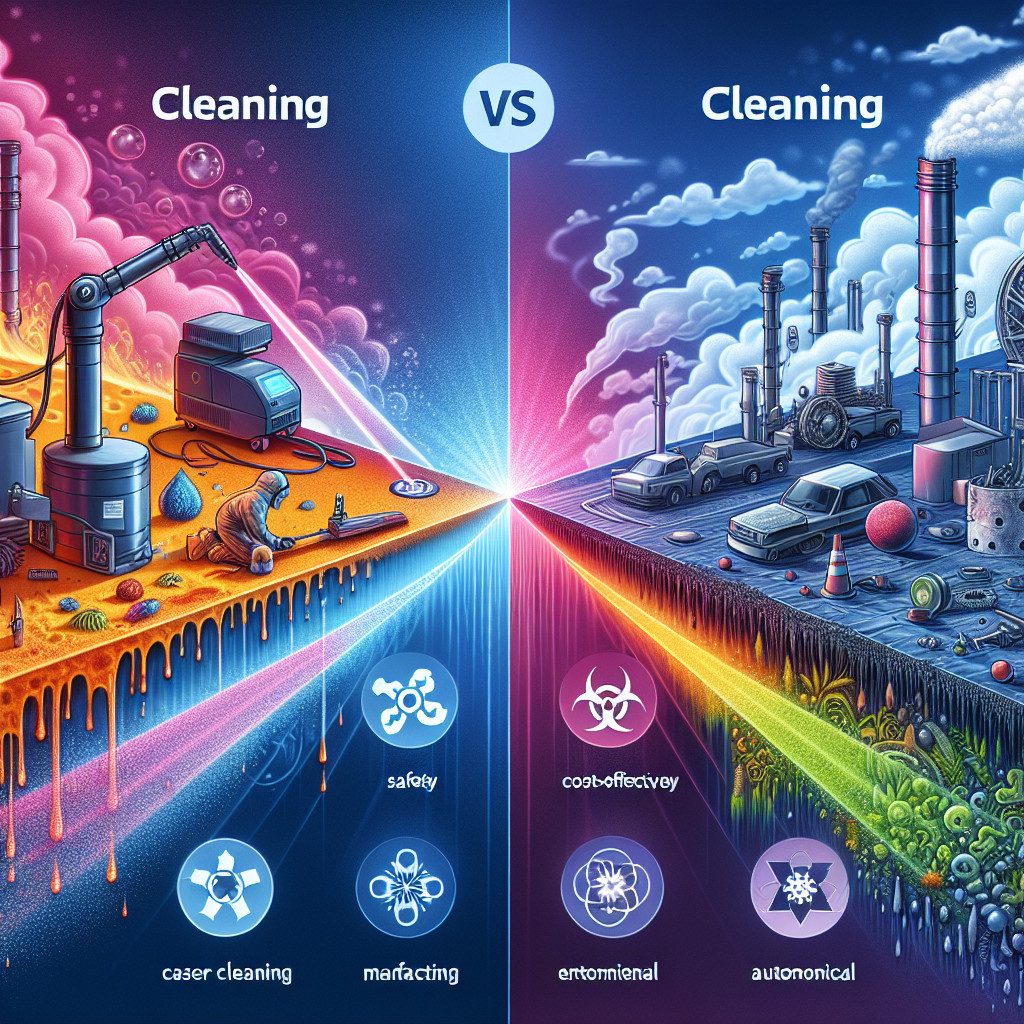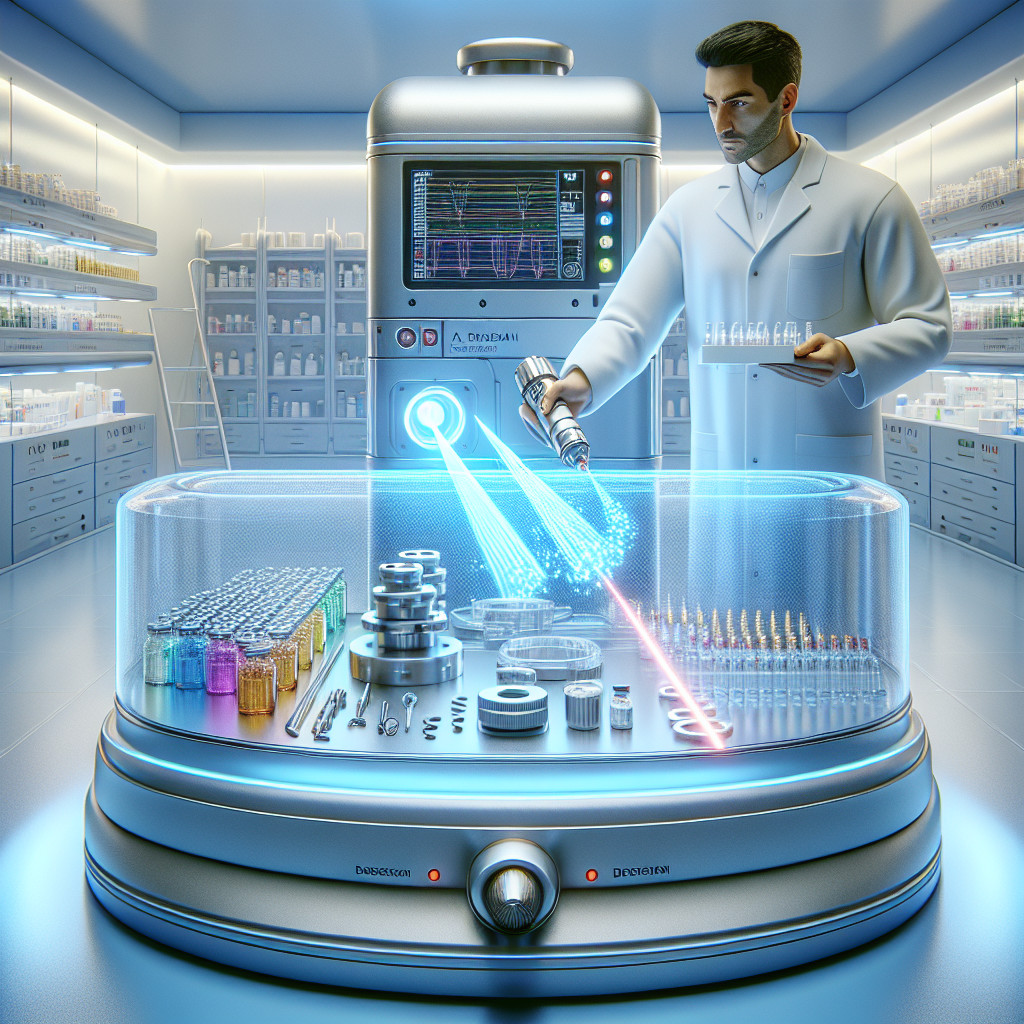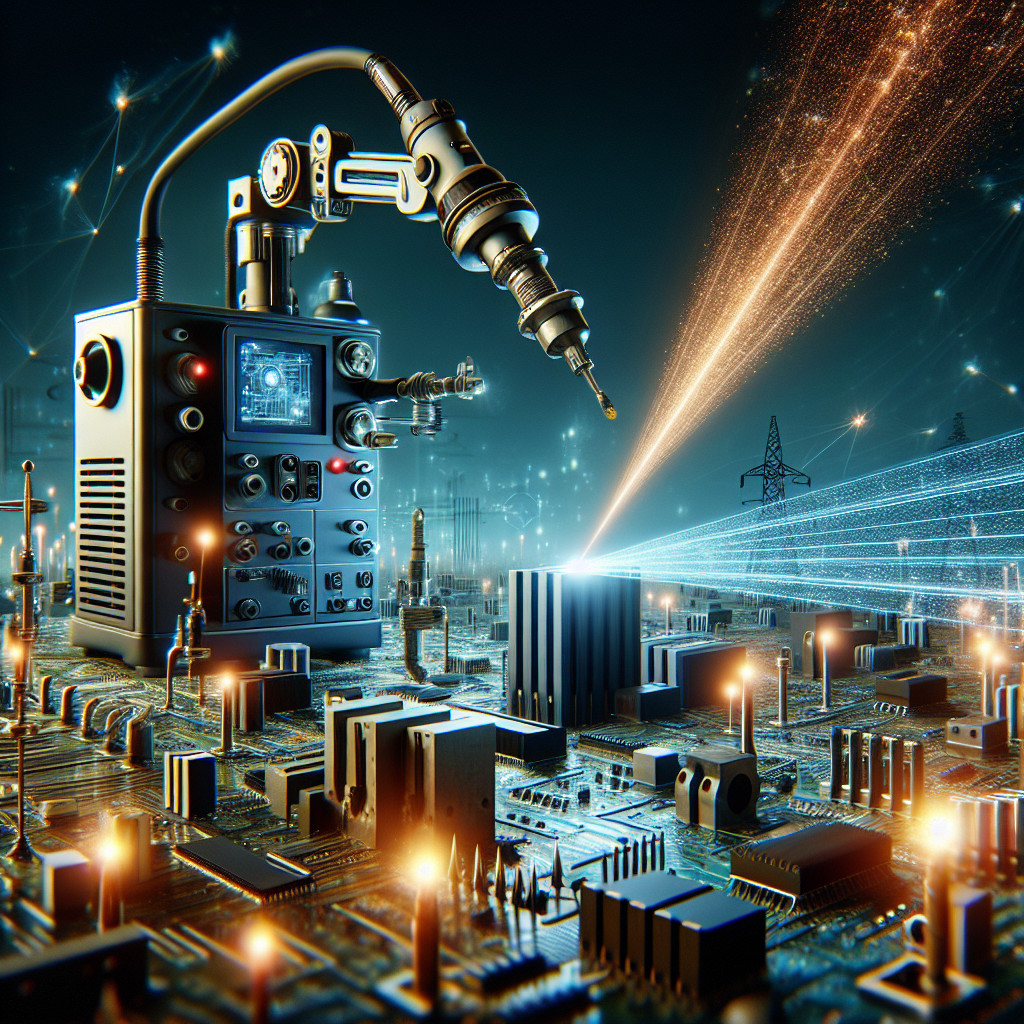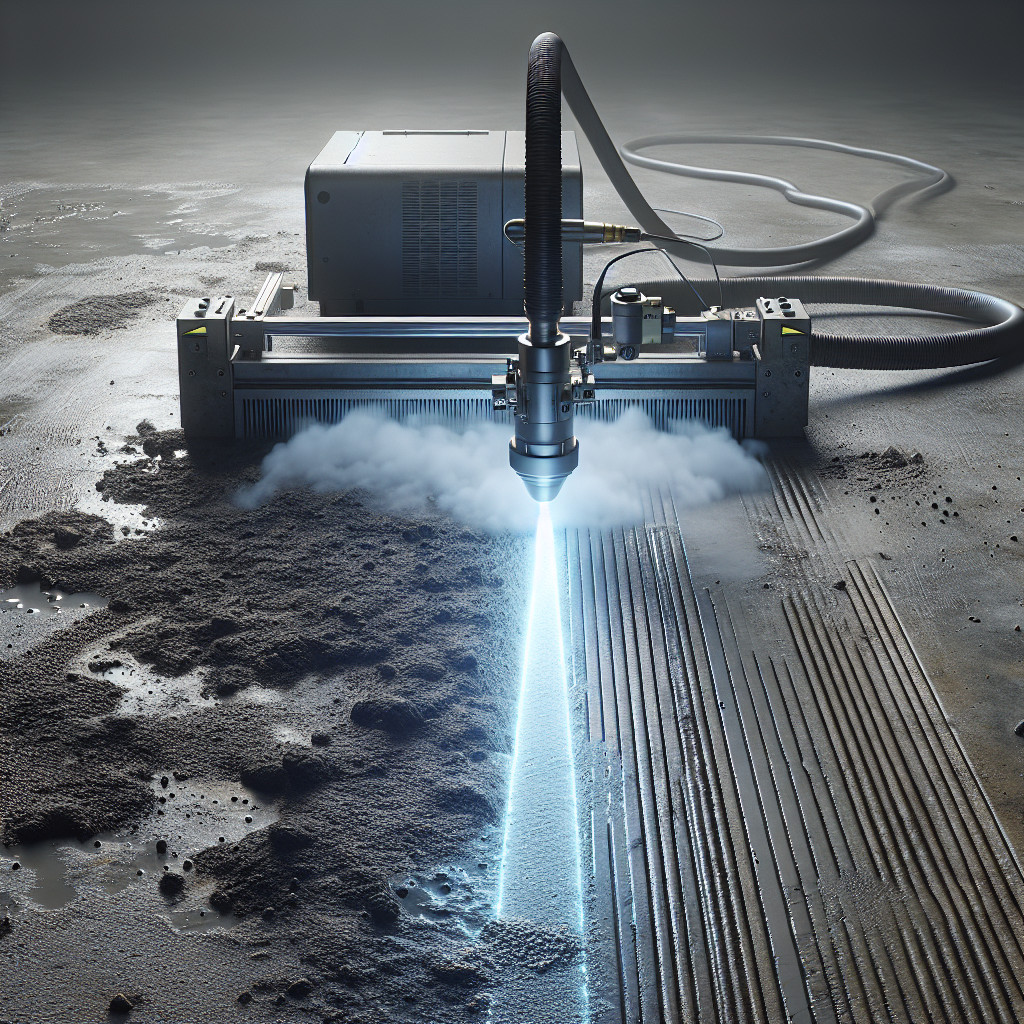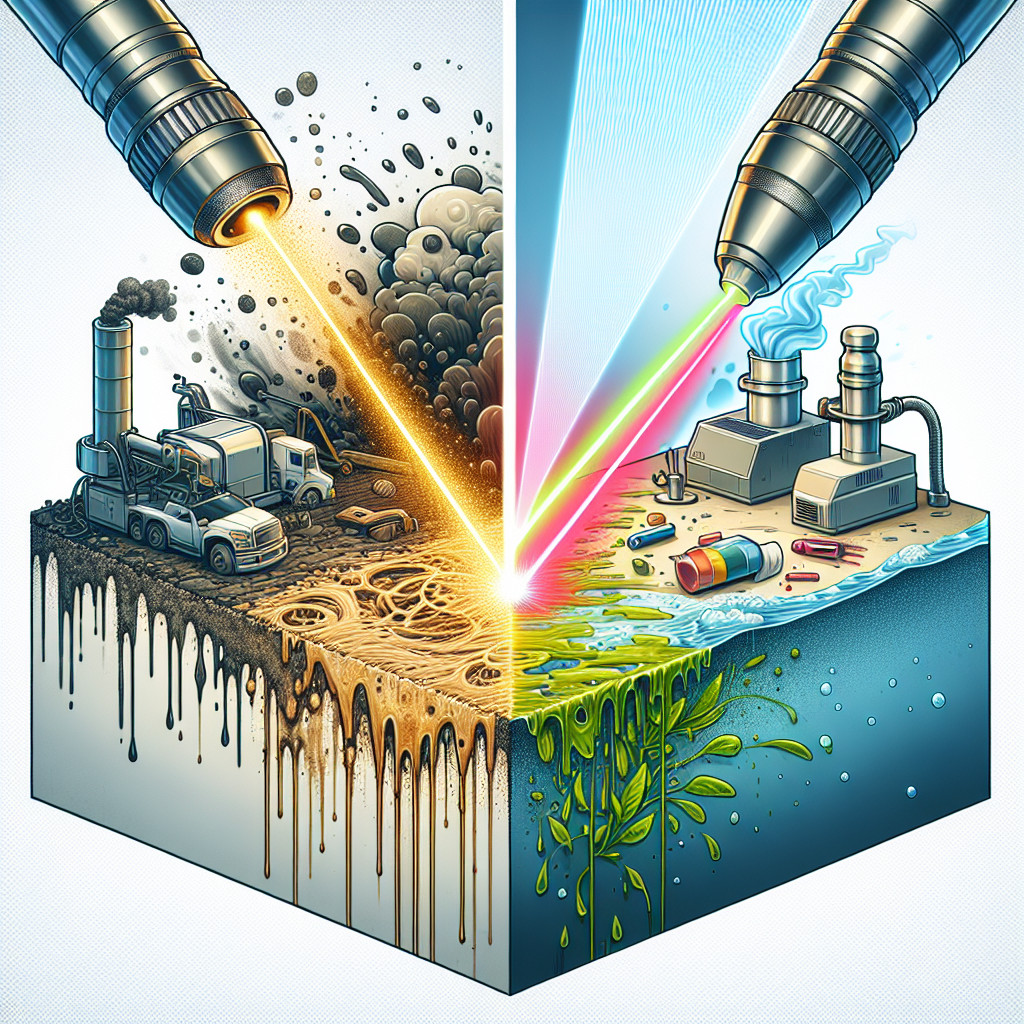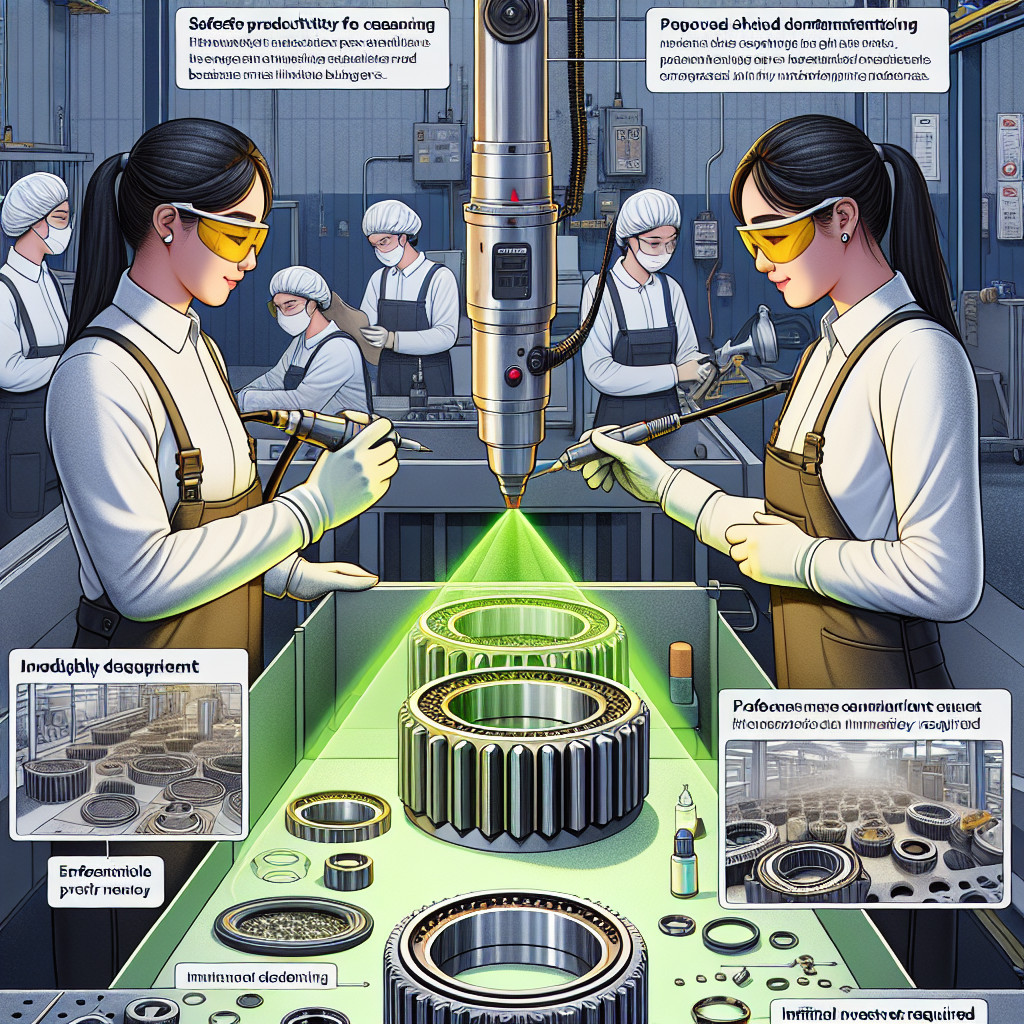- History and development of laser cleaning technology
- Environmental impact of laser cleaning versus traditional methods
- Applications of laser cleaning in various industries
- Future prospects and advancements in laser cleaning technology
- Comparison of energy consumption between laser cleaning and traditional methods
- Effectiveness of laser cleaning on different types of contaminants
- Impact of laser cleaning on surface roughness and texture
- Comparison of cleaning capabilities for different types of contaminants (grease, oil, dirt, etc.)
History and development of laser cleaning technology
Laser cleaning technology has revolutionized the field of surface cleaning and restoration. It offers a non-contact, non-abrasive, and highly precise method of removing contaminants, coatings, and impurities from various surfaces. This article aims to explore the , highlighting its key milestones and advancements over the years.
Early Beginnings:
The concept of using lasers for cleaning purposes can be traced back to the 1960s when the first laser was invented. However, it wasn’t until the 1980s that researchers began to explore the potential of lasers in the field of cleaning. Initially, lasers were primarily used for cutting and welding applications, but their ability to deliver high-energy pulses made them suitable for cleaning as well.
Emergence of Laser Cleaning:
In the early 1990s, laser cleaning technology started gaining traction as researchers and engineers recognized its potential in various industries. The first commercial laser cleaning systems were introduced, primarily targeting the aerospace and automotive sectors. These early systems utilized pulsed lasers to remove rust, paint, and other contaminants from metal surfaces.
Advancements in Laser Technology:
As laser technology continued to evolve, so did laser cleaning systems. The introduction of fiber lasers in the early 2000s brought significant improvements in terms of efficiency, reliability, and cost-effectiveness. Fiber lasers offered higher power output, better beam quality, and longer lifetimes compared to their predecessors, making them ideal for industrial cleaning applications.
Applications and Benefits:
Laser cleaning technology found widespread applications in industries such as automotive, aerospace, electronics, cultural heritage preservation, and more. It proved to be highly effective in removing rust, oxides, coatings, and even delicate contaminants from various surfaces. Laser cleaning offered several advantages over traditional cleaning methods, including reduced environmental impact, minimal surface damage, and increased precision.
Ongoing Research and Development:
The field of laser cleaning technology continues to evolve, with ongoing research and development efforts focused on further improving its capabilities. Researchers are exploring new laser sources, such as ultrafast lasers, which offer even higher precision and control. Additionally, advancements in beam delivery systems and automation have made laser cleaning more efficient and accessible to a wider range of industries.
Keywords: laser cleaning technology, surface cleaning, restoration, contaminants, coatings, impurities, milestones, advancements, non-contact, non-abrasive, precise, early beginnings, cutting, welding, high-energy pulses, emergence, commercial systems, aerospace, automotive, pulsed lasers, rust, paint, fiber lasers, efficiency, reliability, cost-effectiveness, beam quality, applications, benefits, environmental impact, ongoing research, ultrafast lasers, precision, control, beam delivery systems, automation.
Long-tail Phrases:
1. .
2. Advancements in laser technology for surface cleaning.
3. Applications and benefits of laser cleaning in various industries.
4. The emergence of laser cleaning as a non-contact and non-abrasive method.
5. Ongoing research and development in laser cleaning technology.
6. The role of fiber lasers in revolutionizing the field of surface cleaning.
7. Laser cleaning: a precise and environmentally friendly solution.
8. Exploring the potential of ultrafast lasers in laser cleaning applications.
9. The impact of laser cleaning on cultural heritage preservation.
10. Automation and beam delivery systems in laser cleaning technology.
Environmental impact of laser cleaning versus traditional methods
Laser cleaning is a non-contact, non-abrasive method that utilizes high-intensity laser beams to remove contaminants from surfaces. Unlike traditional methods, laser cleaning does not require the use of chemical solvents or abrasive materials, making it a more sustainable and eco-friendly option. The laser beam vaporizes the contaminants, leaving behind a clean surface without generating any hazardous waste. This significantly reduces the environmental footprint associated with cleaning processes.
Reduction in chemical usage and waste generation
One of the key advantages of laser cleaning is the elimination of chemical solvents. Traditional cleaning methods often rely on harsh chemicals that can be harmful to both human health and the environment. These chemicals can contaminate water sources, soil, and air when improperly disposed of or released during the cleaning process. Laser cleaning eliminates the need for such chemicals, thereby reducing the risk of pollution and minimizing waste generation.
Energy efficiency and carbon footprint
Laser cleaning is also more energy-efficient compared to traditional methods. The laser beam can be precisely targeted, minimizing the amount of energy required for the cleaning process. Additionally, laser cleaning can be automated, further optimizing energy consumption. This energy efficiency translates into a reduced carbon footprint, as less energy is consumed and fewer greenhouse gas emissions are produced during the cleaning process.
Preservation of the cleaned surface
Another significant advantage of laser cleaning is its gentle nature. Traditional cleaning methods often involve abrasive techniques that can damage the surface being cleaned. This can lead to the need for frequent repairs or replacements, resulting in additional waste generation and resource consumption. Laser cleaning, on the other hand, is non-abrasive and does not cause any physical damage to the surface. This preservation of the cleaned surface extends its lifespan, reducing the overall environmental impact.
Drawbacks and limitations
While laser cleaning offers numerous environmental benefits, it is not without its drawbacks and limitations. One of the main limitations is the initial cost of acquiring laser cleaning equipment, which can be higher compared to traditional cleaning methods. However, it is important to consider the long-term cost savings and environmental benefits that laser cleaning provides.
Additionally, laser cleaning may not be suitable for all types of contaminants or surfaces. Certain materials may absorb the laser energy, making the cleaning process less effective. It is crucial to assess the specific cleaning requirements and consult with experts to determine the feasibility of laser cleaning in each case.
Keywords: laser cleaning, traditional methods, environmental impact, sustainable, chemical usage, waste generation, energy efficiency, carbon footprint, preservation, drawbacks, limitations.
Long-tail phrases:
1. Environmental benefits of laser cleaning compared to traditional methods.
2. Reduction in chemical usage and waste generation through laser cleaning.
3. Energy efficiency and carbon footprint of laser cleaning.
4. Preservation of surfaces through gentle laser cleaning.
5. Drawbacks and limitations of laser cleaning technology.
Applications of laser cleaning in various industries
In the aerospace industry, laser cleaning plays a crucial role in maintaining the integrity of aircraft components. It can be used to remove oxidation, corrosion, and other contaminants from critical parts, ensuring optimal performance and safety. Laser cleaning is particularly useful for delicate components such as turbine blades, where traditional cleaning methods may cause damage.
Electronics manufacturing also benefits from laser cleaning technology. It can be used to remove soldering residues, flux, and other contaminants from circuit boards and electronic components. Laser cleaning ensures the reliability and longevity of electronic devices by eliminating potential sources of failure. It also allows for precise cleaning in hard-to-reach areas, improving overall product quality.
Cultural heritage preservation is another area where laser cleaning has made significant contributions. It is used to restore and clean delicate artifacts, sculptures, and historical buildings without causing any damage. Laser cleaning gently removes dirt, soot, and other pollutants, revealing the original beauty of the artwork or structure. This technology has revolutionized the field of conservation, allowing for the preservation of our cultural heritage for future generations.
In the manufacturing industry, laser cleaning is employed for surface preparation before painting, coating, or bonding. It ensures proper adhesion by removing contaminants such as oil, grease, and oxides. Laser cleaning provides a clean and uniform surface, resulting in improved product quality and durability.
The marine industry also benefits from laser cleaning technology. It can be used to remove barnacles, algae, and other marine growth from ship hulls, propellers, and underwater structures. Laser cleaning eliminates the need for toxic antifouling paints and reduces drag, resulting in improved fuel efficiency and reduced maintenance costs.
Other industries that utilize laser cleaning include the medical field, where it is used for sterilization and cleaning of medical instruments, and the food industry, where it ensures the cleanliness of processing equipment. Laser cleaning is also employed in the semiconductor industry for removing particles and contaminants from silicon wafers, ensuring the quality of electronic components.
Keywords: laser cleaning, automotive industry, aerospace industry, electronics manufacturing, cultural heritage preservation, manufacturing industry, marine industry, medical field, food industry, semiconductor industry.
Long-tail phrases: non-contact cleaning method, removal of rust and paint, environmentally friendly option, delicate component cleaning, restoration of artifacts, surface preparation before painting, removal of marine growth, sterilization of medical instruments, cleanliness of processing equipment, removal of particles from silicon wafers.
Future prospects and advancements in laser cleaning technology
1. Increased Power and Precision: One of the key advancements in laser cleaning technology is the development of more powerful and precise lasers. High-power lasers can effectively remove tough contaminants, while precise lasers can target specific areas without damaging the underlying surface. This advancement allows for more efficient and accurate cleaning processes.
2. Miniaturization: Another significant advancement is the miniaturization of laser cleaning devices. Smaller and portable laser cleaning systems have been developed, enabling easy access to hard-to-reach areas. This development expands the range of applications for laser cleaning technology, including delicate surfaces and intricate machinery.
3. Automation and Robotics: Laser cleaning technology has also seen advancements in automation and robotics integration. Automated laser cleaning systems can be programmed to perform repetitive cleaning tasks, reducing human intervention and increasing efficiency. Robotic arms equipped with laser cleaning technology can access complex structures and perform cleaning operations with precision.
4. Environmental Friendliness: Laser cleaning technology is considered environmentally friendly compared to traditional cleaning methods. It eliminates the need for chemical solvents, reducing the release of harmful substances into the environment. Additionally, laser cleaning produces minimal waste, making it a sustainable and eco-friendly solution.
5. Real-time Monitoring and Feedback: Advancements in laser cleaning technology include the integration of real-time monitoring and feedback systems. These systems provide operators with instant feedback on the cleaning process, ensuring optimal cleaning results. Real-time monitoring also allows for adjustments and modifications during the cleaning process, enhancing efficiency and effectiveness.
Future Prospects of Laser Cleaning Technology:
1. Industrial Applications: Laser cleaning technology holds immense potential for various industrial applications. It can be used in manufacturing industries to clean molds, remove rust and paint from metal surfaces, and clean delicate electronic components. The automotive industry can benefit from laser cleaning technology for removing contaminants from car bodies and engine parts. Additionally, the aerospace industry can utilize laser cleaning for maintenance and repair of aircraft components.
2. Cultural Heritage Preservation: Laser cleaning technology has the potential to revolutionize the preservation of cultural heritage. Delicate artifacts, historical buildings, and artworks can be cleaned without causing any damage. Laser cleaning can remove dirt, pollutants, and even graffiti from these valuable assets, ensuring their longevity and maintaining their aesthetic appeal.
3. Medical and Pharmaceutical Applications: Laser cleaning technology can find applications in the medical and pharmaceutical industries. It can be used to clean surgical instruments, medical devices, and pharmaceutical production equipment. Laser cleaning ensures the removal of bacteria, viruses, and other contaminants, maintaining high standards of hygiene and safety.
4. Electronics and Semiconductor Industry: The electronics and semiconductor industry can benefit from laser cleaning technology for removing contaminants from delicate electronic components. Laser cleaning can effectively remove dust particles, residues, and oxides from circuit boards, ensuring optimal performance and reliability.
Keywords: laser cleaning technology, advancements, power, precision, miniaturization, automation, robotics, environmental friendliness, real-time monitoring, industrial applications, cultural heritage preservation, medical applications, electronics industry.
Long-tail Phrases:
1. for industrial applications.
2. The potential of laser cleaning technology in cultural heritage preservation.
3. Laser cleaning technology in the medical and pharmaceutical industries.
4. Advancements in laser cleaning technology for the electronics and semiconductor industry.
Comparison of energy consumption between laser cleaning and traditional methods
W dzisiejszych czasach, kiedy zrównoważony rozwój i ochrona środowiska są priorytetami, coraz większą uwagę przykłada się do efektywności energetycznej różnych procesów. Jednym z obszarów, który jest szczególnie interesujący pod tym względem, jest czyszczenie powierzchni. Tradycyjne metody czyszczenia, takie jak piaskowanie, chemikalia czy wysokociśnieniowe mycie, są znane ze swojego wysokiego zużycia energii. Jednak w ostatnich latach coraz większą popularność zdobywa czyszczenie laserowe, które jest uważane za bardziej energooszczędne rozwiązanie. W tym artykule dokonamy porównania zużycia energii między czyszczeniem laserowym a tradycyjnymi metodami.
Czyszczenie laserowe jest procesem, w którym skoncentrowane wiązki laserowe są skierowane na powierzchnię, aby usunąć zanieczyszczenia. W porównaniu do tradycyjnych metod, czyszczenie laserowe ma wiele zalet. Po pierwsze, jest to nieinwazyjna metoda, która nie wymaga użycia żadnych substancji chemicznych ani środków czyszczących. Oznacza to, że nie ma ryzyka zanieczyszczenia środowiska lub powstania odpadów chemicznych. Po drugie, czyszczenie laserowe jest bardziej precyzyjne i skuteczne, ponieważ wiązka laserowa może być dostosowana do różnych rodzajów powierzchni i zanieczyszczeń. Po trzecie, czyszczenie laserowe jest bardziej ekonomiczne, ponieważ nie wymaga częstej wymiany materiałów eksploatacyjnych, takich jak piasek czy chemikalia.
Jednym z głównych czynników wpływających na zużycie energii w procesie czyszczenia jest moc lasera. Im wyższa moc lasera, tym większe zużycie energii. Jednakże, dzięki postępowi technologicznemu, nowoczesne lasery są coraz bardziej energooszczędne. W porównaniu do tradycyjnych metod, czyszczenie laserowe może być bardziej efektywne energetycznie, ponieważ wymaga mniejszej ilości energii na jednostkę powierzchni. Ponadto, czyszczenie laserowe może być bardziej zrównoważone, ponieważ nie generuje emisji gazów cieplarnianych ani innych szkodliwych substancji.
Ważnym aspektem, który należy wziąć pod uwagę przy porównywaniu zużycia energii między czyszczeniem laserowym a tradycyjnymi metodami, jest czas trwania procesu. Tradycyjne metody czyszczenia mogą wymagać długiego czasu, aby usunąć zanieczyszczenia z powierzchni, co prowadzi do większego zużycia energii. Czyszczenie laserowe, z drugiej strony, może być szybsze i bardziej efektywne, co prowadzi do mniejszego zużycia energii. Oznacza to, że czyszczenie laserowe może być bardziej opłacalne i ekologiczne w dłuższej perspektywie czasowej.
Podsumowując, czyszczenie laserowe jest coraz bardziej popularnym rozwiązaniem ze względu na swoją efektywność energetyczną i ekologiczną. W porównaniu do tradycyjnych metod, czyszczenie laserowe jest bardziej precyzyjne, skuteczne i ekonomiczne. Dzięki postępowi technologicznemu, nowoczesne lasery są coraz bardziej energooszczędne, co przyczynia się do zmniejszenia zużycia energii. Słowa kluczowe: czyszczenie laserowe, tradycyjne metody, efektywność energetyczna, zrównoważony rozwój, ochrona środowiska, precyzja, skuteczność, ekonomia, moc lasera, emisja gazów cieplarnianych, czas trwania procesu.
Frazy kluczowe: czyszczenie laserowe a tradycyjne metody czyszczenia, efektywność energetyczna czyszczenia laserowego, zrównoważony rozwój i czyszczenie laserowe, czyszczenie laserowe a ochrona środowiska, precyzja czyszczenia laserowego, skuteczność czyszczenia laserowego, ekonomia czyszczenia laserowego, moc lasera a zużycie energii, emisja gazów cieplarnianych a czyszczenie laserowe, czas trwania procesu czyszczenia laserowego.
Effectiveness of laser cleaning on different types of contaminants
Laser cleaning has proven to be effective in removing a wide range of contaminants, including rust, paint, grease, oil, dirt, scale, and even biological substances. The ability of lasers to selectively target specific contaminants makes them highly efficient in cleaning various surfaces without causing damage or altering the material properties.
Effectiveness of Laser Cleaning:
The effectiveness of laser cleaning depends on several factors, including the type of contaminant, the surface material, laser parameters, and the cleaning system used. Different contaminants require different laser wavelengths and pulse durations for optimal cleaning. For example, shorter wavelengths are more effective in removing organic contaminants, while longer wavelengths are better suited for inorganic substances.
Laser cleaning can achieve high cleaning efficiencies, often exceeding 90%, depending on the contaminant and surface characteristics. The laser energy is absorbed by the contaminant, causing it to vaporize or ablate, leaving behind a clean surface. The non-contact nature of laser cleaning eliminates the need for physical contact, reducing the risk of surface damage and minimizing the generation of secondary waste.
Advantages of Laser Cleaning:
Laser cleaning offers several advantages over traditional cleaning methods. Firstly, it is a non-abrasive technique, which means it does not involve the use of harsh chemicals or abrasive materials that can damage the surface. Secondly, laser cleaning is a dry process, eliminating the need for water or solvents, making it environmentally friendly and cost-effective. Additionally, laser cleaning can be performed on complex shapes and hard-to-reach areas, ensuring thorough cleaning without compromising efficiency.
Limitations of Laser Cleaning:
While laser cleaning is highly effective, it does have some limitations. The cost of laser cleaning equipment can be relatively high, making it less accessible for small-scale applications. Moreover, the effectiveness of laser cleaning can be influenced by factors such as surface roughness, reflectivity, and the presence of coatings or layers. In some cases, multiple laser passes or the use of different laser systems may be required to achieve the desired level of cleanliness.
Keywords: laser cleaning, contaminants, effectiveness, non-contact, environmentally friendly, rust, paint, grease, oil, dirt, scale, biological substances, cleaning efficiencies, laser parameters, surface material, wavelength, pulse duration, vaporize, ablate, non-abrasive, dry process, complex shapes, cost-effective, limitations, surface roughness, reflectivity, coatings, layers.
Long-tail Phrases:
1. .
2. Advantages and limitations of laser cleaning technology.
3. Laser cleaning as an environmentally friendly cleaning method.
4. The role of laser parameters in achieving optimal cleaning efficiency.
5. Comparison of laser cleaning with traditional cleaning methods.
6. Applications of laser cleaning in various industries.
7. Challenges and future prospects of laser cleaning technology.
8. Surface preparation using laser cleaning for improved adhesion.
9. Laser cleaning for restoration and preservation of cultural heritage.
10. Laser cleaning for automotive and aerospace industries.
Impact of laser cleaning on surface roughness and texture
Czyszczenie powierzchni jest nieodłącznym elementem wielu dziedzin, takich jak przemysł, medycyna, archeologia czy sztuka. Tradycyjne metody czyszczenia, takie jak ścieranie, szorowanie czy stosowanie chemikaliów, mogą prowadzić do uszkodzenia powierzchni, zmiany jej struktury lub utraty oryginalnego wyglądu. W ostatnich latach coraz większą popularność zyskuje czyszczenie laserowe, które pozwala na precyzyjne i bezpieczne usunięcie zanieczyszczeń z różnych materiałów. Jednakże, wpływ czyszczenia laserowego na chropowatość powierzchni i teksturę jest tematem, który wymaga szczegółowych badań.
Metodyka:
W celu zbadania wpływu czyszczenia laserowego na chropowatość powierzchni i teksturę, przeprowadzono serię eksperymentów na różnych materiałach, takich jak metal, szkło, ceramika i drewno. Do czyszczenia zastosowano różne rodzaje laserów, takie jak laser CO2, laser Nd:YAG czy laser femtosekundowy. Przed i po czyszczeniu powierzchnie zostały poddane analizie za pomocą różnych technik, takich jak mikroskopia elektronowa skaningowa (SEM), profilometria czy analiza obrazu.
Wyniki:
Wyniki badań wykazały, że czyszczenie laserowe ma istotny wpływ na chropowatość powierzchni i teksturę. W przypadku niektórych materiałów, takich jak metal, czyszczenie laserowe prowadziło do zmniejszenia chropowatości powierzchni, co może być korzystne w przypadku aplikacji, gdzie wymagana jest gładka powierzchnia. Jednakże, w przypadku innych materiałów, takich jak drewno, czyszczenie laserowe mogło prowadzić do zwiększenia chropowatości powierzchni, co może być niepożądane w niektórych przypadkach.
Ponadto, analiza tekstury powierzchni wykazała, że czyszczenie laserowe może prowadzić do zmiany struktury powierzchni. Na przykład, na powierzchniach metalowych obserwowano zmniejszenie ilości mikrozagłębień i zwiększenie ilości mikrowypukłości po czyszczeniu laserowym. Natomiast na powierzchniach drewnianych obserwowano zwiększenie ilości mikrozagłębień i zmniejszenie ilości mikrowypukłości. Te zmiany w teksturze powierzchni mogą mieć istotny wpływ na właściwości mechaniczne, adhezję czy wygląd estetyczny materiałów.
Wnioski:
Wpływ czyszczenia laserowego na chropowatość powierzchni i teksturę jest zależny od rodzaju materiału i parametrów czyszczenia. Dlatego, przed zastosowaniem czyszczenia laserowego, konieczne jest przeprowadzenie szczegółowych badań, aby ocenić jego wpływ na daną powierzchnię. Słowa kluczowe: czyszczenie laserowe, chropowatość powierzchni, tekstura, materiał, laser CO2, laser Nd:YAG, laser femtosekundowy.
Frazy kluczowe: wpływ czyszczenia laserowego na chropowatość powierzchni, wpływ czyszczenia laserowego na teksturę powierzchni, analiza chropowatości powierzchni po czyszczeniu laserowym, analiza tekstury powierzchni po czyszczeniu laserowym, zmiany w strukturze powierzchni po czyszczeniu laserowym.
Comparison of cleaning capabilities for different types of contaminants (grease, oil, dirt, etc.)
Pierwszym rodzajem zanieczyszczenia, który omówimy, jest tłuszcz. Tłuszcz jest powszechnie spotykany w kuchniach, restauracjach i zakładach przemysłowych. Może być trudny do usunięcia ze względu na swoją lepkość i przyczepność do powierzchni. W przypadku tłuszczu, skuteczne środki czyszczące to zazwyczaj detergenty o silnym działaniu przeciw tłuszczowemu. Mogą one zawierać substancje rozpuszczające tłuszcz, takie jak alkalia, które pomagają w rozpuszczaniu i usunięciu tłuszczu. Ważne jest również stosowanie odpowiednich narzędzi, takich jak szczotki lub gąbki, aby skutecznie usunąć tłuszcz z powierzchni.
Kolejnym rodzajem zanieczyszczenia jest olej. Olej jest często spotykany w warsztatach samochodowych, fabrykach i innych miejscach, gdzie występuje duża ilość maszyn i urządzeń. Usunięcie oleju może być trudne ze względu na jego lepkość i trwałość. W przypadku oleju, skuteczne środki czyszczące to zazwyczaj rozpuszczalniki organiczne, takie jak benzyna lub alkohol izopropylowy. Te substancje mają zdolność do rozpuszczania oleju i ułatwiają jego usunięcie. Ważne jest również stosowanie odpowiednich środków ochrony osobistej, takich jak rękawice ochronne, podczas czyszczenia oleju.
Innym powszechnym rodzajem zanieczyszczenia jest brud. Brud może obejmować różne substancje, takie jak kurz, piasek, błoto itp. Usunięcie brudu może być stosunkowo łatwe, ale wymaga odpowiednich narzędzi i środków czyszczących. W przypadku brudu, skuteczne środki czyszczące to zazwyczaj detergenty ogólnego użytku, które mają zdolność do usuwania różnych rodzajów zanieczyszczeń. Ważne jest również stosowanie odpowiednich narzędzi, takich jak miotełki, odkurzacze lub mopy, aby skutecznie usunąć brud z powierzchni.
Ważne jest zrozumienie, że różne rodzaje zanieczyszczeń wymagają różnych środków czyszczących. Nie ma jednego uniwersalnego środka czyszczącego, który skutecznie usunie wszystkie rodzaje zanieczyszczeń. Dlatego istotne jest, aby wybrać odpowiedni środek czyszczący do konkretnego rodzaju zanieczyszczenia, z którym mamy do czynienia.
Słowa kluczowe: czyszczenie, zanieczyszczenia, tłuszcz, olej, brud, detergenty, rozpuszczalniki, narzędzia czyszczące, kurz, piasek, błoto.
Frazy kluczowe:
– Skuteczne środki czyszczące do usuwania tłuszczu z powierzchni kuchennych.
– Jak usunąć olej z maszyn i urządzeń w warsztatach.
– Najlepsze metody czyszczenia brudu z różnych powierzchni.
– Porównanie różnych rodzajów detergentów do usuwania zanieczyszczeń.
– Jakie narzędzia czyszczące są najlepsze do usuwania różnych rodzajów zanieczyszczeń.
– Skuteczne środki czyszczące do usuwania kurzu i piasku z powierzchni.
– Jakie środki ochrony osobistej są niezbędne podczas czyszczenia oleju.
- Laser cleaning and long-term cost savings – cost analysis - February 29, 2024
- Laser cleaning and reducing emissions of harmful substances - February 28, 2024
- Can laser cleaning be used in veterinary medicine? - February 28, 2024



